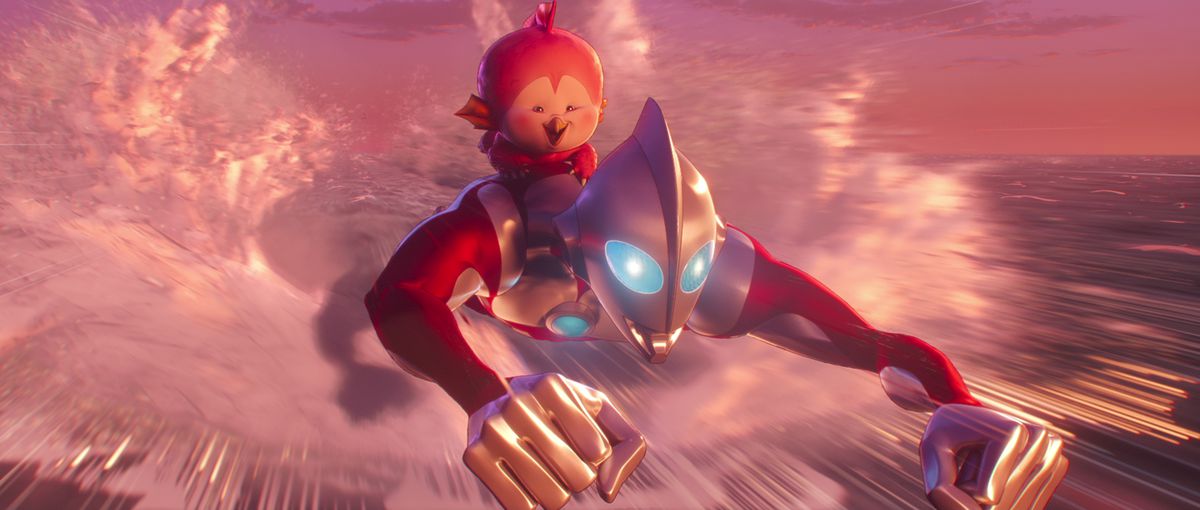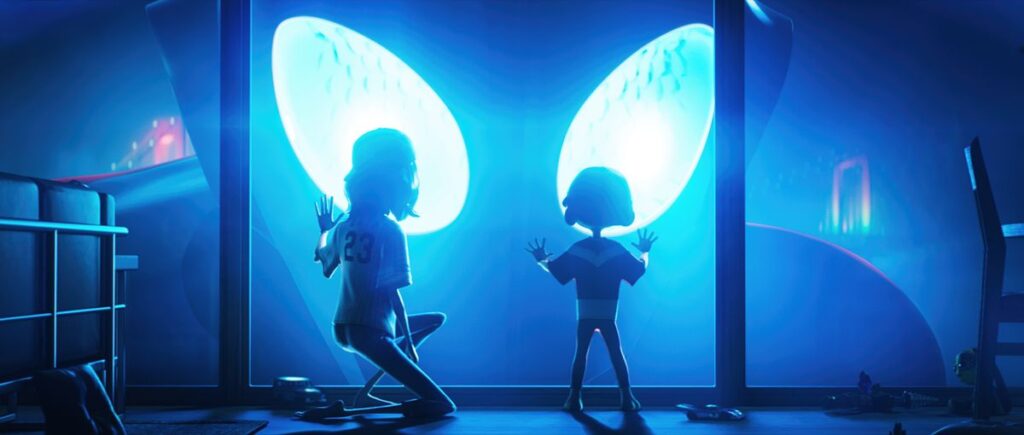At its pulsing circular core, Ultraman is a generational story. Conceived by Eiji Tsuburaya, one of Godzilla’s co-creators and the founder of Tsuburaya Productions, the franchise centers on a gigantic, red-and-silver superhero from another planet who travels to Earth to defend it from hostile extraterrestrial forces. Once he arrives on our planet, he binds himself to a human host, allowing them to wield his awesome power.
Over the course of the franchise’s nearly 60-year existence, dozens of heroes have assumed the mantle of Ultraman, each with their own unique legacy and challenges. In Netflix Animation’s new movie Ultraman: Rising, the otherworldly defender of justice and balance is faced with what might be his greatest challenge to date: parenthood.
Directed by Shannon Tindle (Lost Ollie) and John Aoshima (2017’s DuckTales), and co-written by Tindle and Marc Haimes (Kubo and the Two Strings), Ultraman: Rising centers on Kenji “Ken” Sato, a brash, self-centered baseball player living in America. When his ailing, estranged father is injured, presumably while fighting as Ultraman, Ken returns to Tokyo to assume the hero’s mantle.
Image: Netflix
Grieving the disappearance of his mother, Emiko, and resentful about his father’s absence during his childhood, Ken doesn’t take either his professional obligations as a baseball player or his role as Ultraman very seriously. He treats the latter more or less as a side gig, instead focusing on preening for the press and showboating on the field, alienating himself from his new teammates and infuriating his coach. That all changes when Ken rescues the baby of a felled kaiju, which imprints itself onto him, believing Ultraman is its mother. With little other recourse, Ken must figure out how to raise the infant kaiju while balancing his responsibilities to his team and his duties as Tokyo’s protector.
Ultraman: Rising doesn’t spend a whole lot of time on the decades-spanning mythos and world-building around the character. Instead, Tindle and company hone the film’s focus down to Ken’s family dynamic, and his subsequent arc from an obnoxiously selfish braggart to a humbler, more mature hero. That decision absolutely works to the movie’s benefit, allowing audiences who might otherwise be unfamiliar with the character to grasp the broader stakes and particularities of his universe.

Image: Netflix
Tindle and Aoshima’s film is easily the most accessible, newcomer-friendly entry point into the Ultraman franchise to come out in recent years, especially compared to Shinji Higuchi and Hideaki Anno’s fun but extremely lore-heavy 2022 movie Shin Ultraman. This animated adventure is stunning, with a kinetic sense of stylized action and comic book-inspired spectacle à la Spider-Man: Across the Spider-Verse. That said, it’s its own film attempting to tell its own grounded emotional story, one that relies more on Ken’s fledgling relationship with his surrogate kaiju daughter (later named Emi, after his mother) and his reluctant effort to reconnect with his father than it does on whiz-bang fight sequences and explosions.
It boils down to a story about one generation growing into its own identity through the proxy of parenthood — a challenge that pushes Ken to understand his own parents, and ultimately attempt to forgive their foibles and shortcomings. “[Kids are] like little monsters sometimes,” a character tells Kenji, when asked how they balance their own responsibilities with the demands of raising a child. “They have hearts and minds of their own. They’re trying to discover who they are and what they want, and the only support they have is us. Imperfect, messed-up us, dealing with our own issues, trying to figure out who the heck we are.” That’s a moving, heartfelt sentiment, and when combined with Ultraman: Rising’s beautiful animation, lithe character designs, and bountiful color palette, it elevates the film beyond the typical fare of other recent animated children’s movies.

Image: Netflix
There are some excellent, thoughtful pieces of character acting in Ultraman: Rising, like when Ken transforms into Ultraman in midair while riding a motorcycle over a ramp, gently catching it in the palm of his hand before placing it on the ground beside him like a toy. Or when he absentmindedly fidgets when confronted by how his father’s absence as a child affected him.
But one of my favorite elements in the movie, besides its stunning, action-driven finale, is its commitment to humanizing each of its principal characters, from the rambunctious infant kaiju with a habit of getting into trouble to the film’s antagonist, Dr. Onda, the commander of Japan’s Kaiju Defense Force. Onda isn’t just some one-dimensional villain; he’s a man wracked by grief who resents Ultraman for not protecting his family, who were killed in a kaiju attack prior to the events of the film.
Ultraman: Rising offers much more than the average animated kids’ film: It rises to stand as not only one of the best Ultraman stories in recent memory, but arguably one of this year’s best animated movies. It’s designed to leave the audience wanting more — and it suggests they might get it. Given the film’s post-credits stinger, we may not have seen the last of Ken Sato’s incarnation of Ultraman yet.
Ultraman: Rising is streaming on Netflix now.

